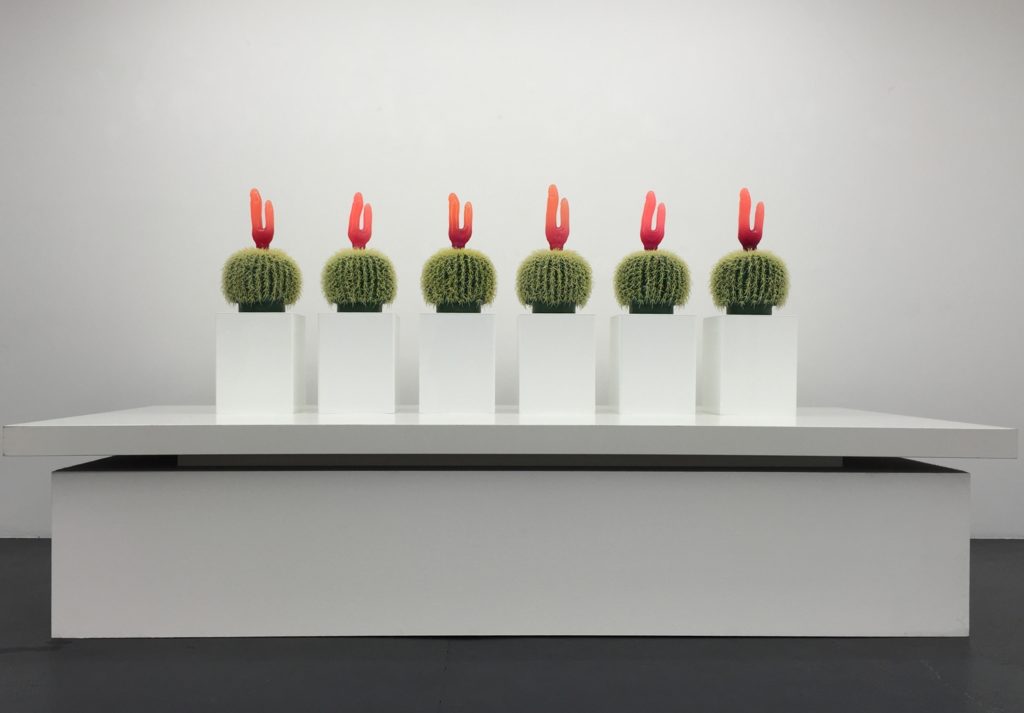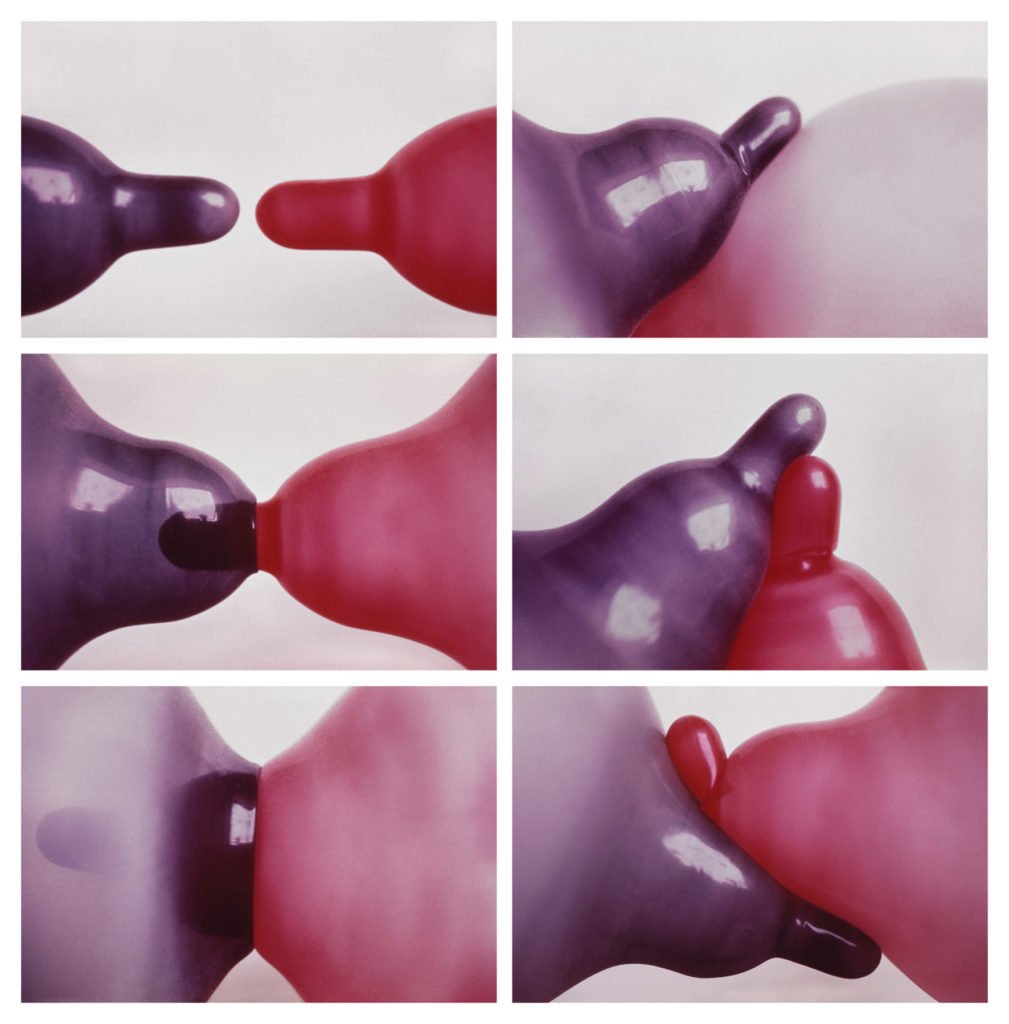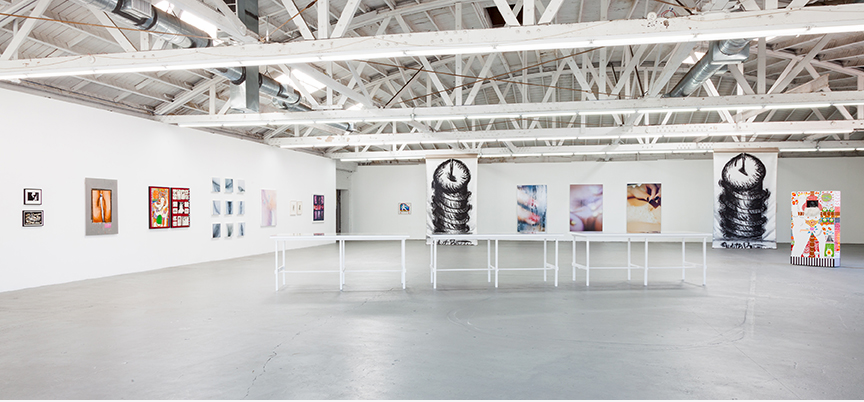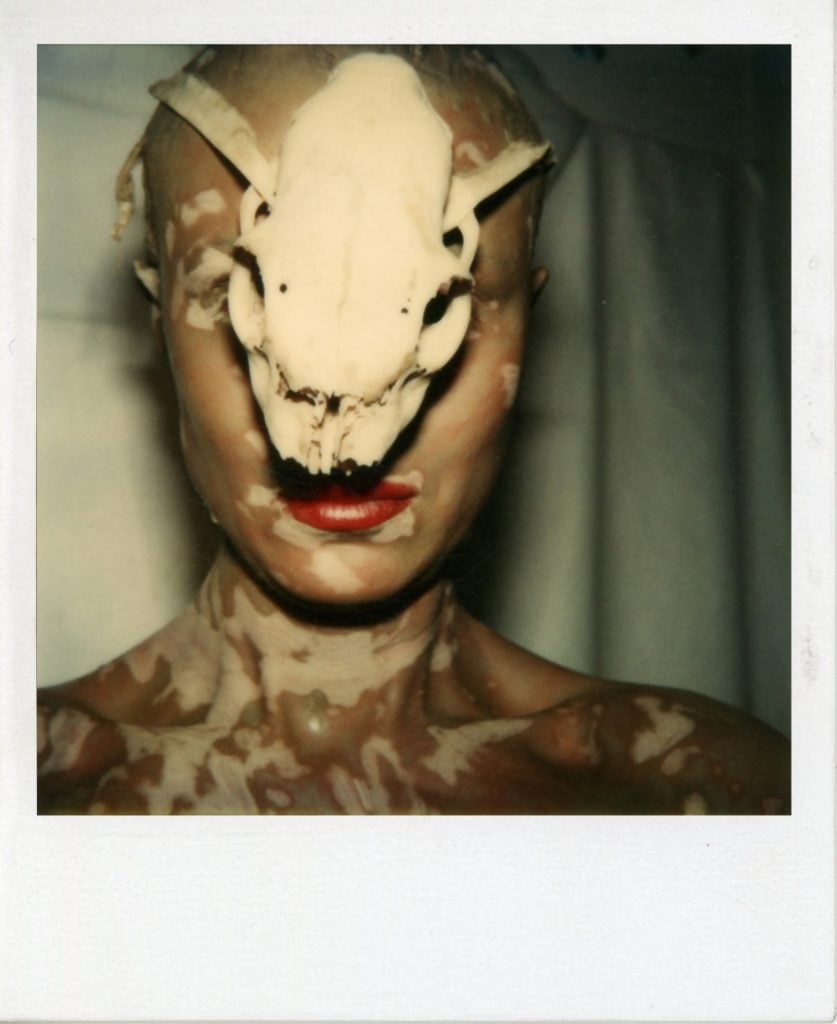Art Fairs
Does Sex Sell When the Work Is Made by Women? Explicit Feminist Art Tests the Waters at Frieze
"Obscene" art by women from the '70s and '80s has been censored and blacklisted for decades. Now, it's taking center stage at an unlikely venue.

"Obscene" art by women from the '70s and '80s has been censored and blacklisted for decades. Now, it's taking center stage at an unlikely venue.

In 1973, Betty Tompkins packed up her latest paintings—tightly cropped images of couples having sex—and sent them to Paris for a gallery show. They never arrived. Customs agents blocked the works from entering the country on the grounds that they violated obscenity laws—and they didn’t see the light of day again for decades.
This week, work from that series will go on view in a special section at the Frieze Art Fair in London. The presentation, titled “Sex Work: Feminist Art & Radical Politics,” brings together often-censored, explicit art from the 1970s and ‘80s by nine women artists, including Judith Bernstein, Natalia LL, and Penny Slinger.
For decades, these artists’ common interest in frank sexual imagery put them at odds with the mainstream art world and the mainstream feminist movement. Now, they are receiving a belated embrace from both. Tompkins calls the Frieze section “a major statement in the middle of the most commercial venue possible.”
“These artists are chronologically older, but in many cases, they are really getting attention only now,” says the independent curator Alison Gingeras, who organized the Frieze presentation. She was shocked that the fair was interested in the idea. “I had the impression that that’s not what they were hoping for when they approached me… but they loved it,” she recalls.
Over the past decade, many of these artists—who work with pornography, phallic imagery, and photos of their own sexual exploits—slowly but steadily began to attract the attention of prominent galleries, such as Allison Jacques in London, Salon 94 in New York, and Blum & Poe in Los Angeles. And the prices are rising accordingly.

Renate Bertlmann’s Zärtliche Berührungen (Tender Touches) (1976). ©2017 Renate Bertlmann. Courtesy of Richard Saltoun Gallery.
The Austrian artist Renate Bertlmann, who joined Richard Saltoun Gallery in 2013 and had a two-person show at Sotheby’s S2 gallery in April, estimates her prices have increased by a factor of 10 over the past 15 years. They now range from £4,000 for a photograph to six figures for an installation, according to the gallery—which is, admittedly, still only a fraction of the cost of work by some of her male contemporaries.
Institutions are slowly starting to explore this lesser-known chapter of art history as well. Bertlmann, whose performance Pregnant Bride With Collection Bag—in which she dressed up as a pregnant bride and asked onlookers to donate to the upkeep of an important relic, which turned out to be a sculpture of a dildo—was censored by the Centre Pompidou in 1979, will have a retrospective at the State Gallery of Lower Austria next year. In May, she became the third woman to win the Grand Austrian State Prize since its inception in 1950.
The American artist Judith Bernstein, whose large charcoal drawing of a very phallic screw was censored from a group show in Philadelphia in 1974, will have a solo show at the Drawing Center this month. And the late Austrian photographer Birgit Jürgenssen, who took stylized photographs of herself well before Cindy Sherman, will be the subject of a major exhibition at the Kunsthalle Tübingen in late 2018.

FOCUS Censorship Letter, protesting the removal of Bernstein’s drawing Horizontal, signed by artists and critics including Louise Bourgeois, Audrey Flack, Linda Nochlin, Clement Greenberg, Alice Neel, Marcia Tucker, and Joan Snyder. Courtesy of Judith Bernstein.
The renewed interest in this material is part of a broader push by both museums and the art market to re-evaluate previously overlooked work from the 1970s and ‘80s.
“I’ve learned that the art world loves old ladies,” says Marilyn Minter, whose paintings of porn tableaux from the 1980s will also be shown at Frieze. “They love young bad boys and old ladies.”
During the first half of these artists’ careers, however, mainstream institutions weren’t showing any work by women—let alone sexually explicit work. As a result, they established their own spaces to show. The Polish artist Natalia LL, whose pornographic material was confiscated during a police raid on her apartment in the early 1980s, opened her own gallery in Wrocław at the height of Communist rule.

Installation view of “CUNT” at Venus Over Los Angeles. Courtesy of Venus Over Los Angeles.
Around the same time, a group of 20 artists, including Bernstein, founded A.I.R. Gallery in New York, a co-operative non-profit dedicated to art by women. The Frieze presentation will include a wall-size timeline of A.I.R.’s history.
Why did these women continue to work with explicit material in the face of censorship and ostracism? On both sides of the Atlantic, they were reckoning with the legacies of very macho, dominant artistic movements (Viennese Actionism in Europe and Abstract Expressionism in the US).
At the same time, they chafed at the restrictions of a burgeoning feminist movement that seemed to believe that women who were frank about their interest in sex were part of the problem.
“Not only did women not manufacture porn for there own amusement—or they were just starting to—but it was considered a shallow subject matter, definitely debased,” Minter says. “I thought, ‘It isn’t—it’s an engine of the culture.’” (When she wandered into porn shops in Times Square in the late 1970s to buy source material, “I literally cleared the aisles,” she recalls.)
Gingeras acknowledges that all the women included in the Frieze presentation are white and of a certain class. Indeed, there is a level of privilege underlying the decision to create art about sexual agency. “The culture war within feminism was happening between white women,” she says.
After enduring painful censorship and rejection early on, many of these artists continued to work in relative obscurity, save for the occasional show at an artist-run space. By the early 2000s, “I was pretty much a total failure as a professional artist,” Tompkins says. “I couldn’t provide for myself. I had five adjunct teaching jobs at the same time.”
Her big break came when the dealer Mitchell Algus showed up at her door in 2002. Earlier that day, art critic Jerry Saltz had showed him slides of Tompkins’ work. (She had sent them to Saltz, unsolicited, some five years earlier.)
Algus, who was an early champion of many of the artists in the Frieze presentation, says Tompkins’s and Bernstein’s material was a tough sell 15 years ago. Fellow artists, including William Copley and Paul McCarthy, were early collectors and supporters of Bernstein, but it took the seal of approval from larger galleries to convince a broader base of collectors to buy in.

Birgit Jürgenssen’s Ohne Titel (Selbst mit Schädel) /Untitled (Self with Skull) (1979). © Estate Birgit Jürgenssen, courtesy of Galerie Hubert Winter, Vienna.
After Tompkins had a solo exhibition with Algus, for example, she began working with PPOW in New York. Bernstein, meanwhile, went to The Box in Los Angeles. Since her first show there in 2009, her early drawings—some which will be on view at Frieze—have risen in price from around $15,000 to $28,000.
But the ruthless dynamics of the art market mean that early advocates like Algus can sometimes be left behind. “I have benefited from none of this,” Algus says. “They go to more established galleries with the socioeconomic imprimatur to give these artists credibility.” He says he can’t afford a booth at Frieze—or any art fair, for that matter. By definition, these commercial forums can only present work by participating galleries, whose artists have already risen out of total obscurity.
It is perhaps no coincidence that the ascendance of feminist artists like Minter and Bernstein coincided with the rising prominence of powerful female art collectors and curators. Two dealers who spoke with artnet News noted that the most faithful collectors of this material are women and gay men; heterosexual men, meanwhile, have been reticent to embrace it.
Some subject matter is still too hot to handle across the board. To date, Minter says she has sold only three of her “Bush” paintings, a large series of hyper-stylized images of women’s pubic hair. “I can’t sell these paintings to save my soul, but I know they are the best work I’ve ever done,” she says.
Similarly, museums—particularly in the United States—are still cautious. Gingeras tried and failed to send an exhibition she organized on the subject, “Black Sheep Feminism: The Art of Sexual Politics,” on tour after it ended its run at Dallas Contemporary last year.
“Unless you are an institution that has a feminist focus, how do you get your trustees on board?” she says. “Vaginal imagery has been part of mainstream art history since the beginning, but as soon as you start making work that has a phallus, it’s a different story.”

Installation view of “CUNT” at Venus Over Los Angeles. Courtesy of Venus Over Los Angeles.
Despite lingering resistance, these artists are unlikely to slow down anytime soon. “These women have been on a campaign for the past 50 years,” says Anna Furney, a partner at Venus Gallery, which mounted an exhibition of work by Bernstein, Tompkins, and others in Los Angeles last month.
“I didn’t have an expectation that there was an audience waiting for me, so I did whatever I wanted,” Tompkins says. “And I still do. It’s a hard habit to break.”